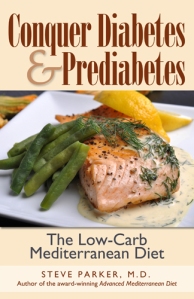
You probably want to shoot for a speed of 3 miles per hour or higher. Or 4.8 kilometers/hr or faster.
The British Journal of Sports Medicine published an article by researchers based in Iran. They analyzed 10 cohort studies that looked at average habitual walking speed and the incidence of type 2 diabetes. Study subjects were not in Iran, but in the U.S., U.K., and Japan.
An easy, casual walking speed is 2 miles per hour (mph) or less. Brisk walking speed is 3-4 mph. The researchers found that a habitual walking speed of even 2.5 mph was linked to a slightly lower risk of type 2 diabetes compared to the casual walkers. A more definitive reduction of diabetes incidence (25%) was seen in those who walk at 3 to 4 mph.
For those of you who think in terms of km/hr: An easy, casual walking speed is 3.2 km/hr or less. Brisk walking speed is 4.8-6.4 km/hr. The researchers found that a habitual walking speed of even 4 km/hr was linked to a slightly lower risk of type 2 diabetes compared to the casual walkers. A more definitive reduction of diabetes incidence (25%) was seen in those who walk at 4.8-6.4 km/hr.
This doesn’t necessarily mean that you’ll cut your risk of developing type 2 diabetes if you increase your habitual walking speed from an easy stroll to 3 mph or higher. But it is suggestive and there is physiological science to support that suggestion. The problem is that this study was observational. Which means it’s possible that faster walkers are simply overall healthier than slower ones. They walk faster because they’re healthier and are just constitutionally (genetically?) less prone to illness. To prove that faster walking speeds prevent some cases of type 2 diabetes, you’d have to take 2,000 slow walkers and somehow motivate 1,000 of them to walk faster habitually, while making sure the slow-pokes stay slow for 5-10 years. Keep everything else the same for all 2,000. After 5-10 years, you compare the incidence of diabetes. That study will not, probably cannot, be done.
Steve Parker, M.D.
h/t to Diabetes Daily for a well-written article on this.
















